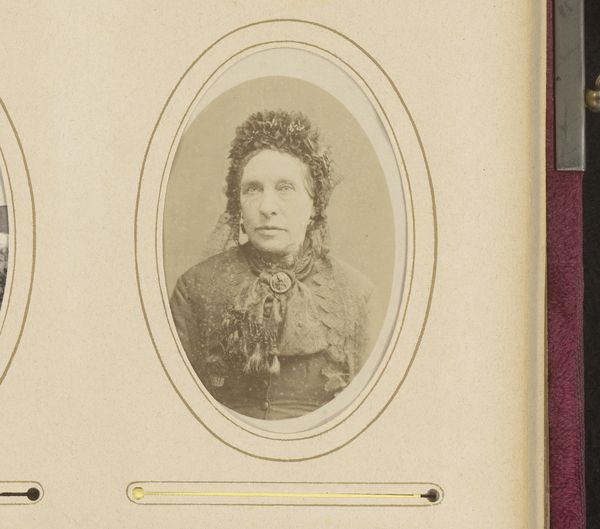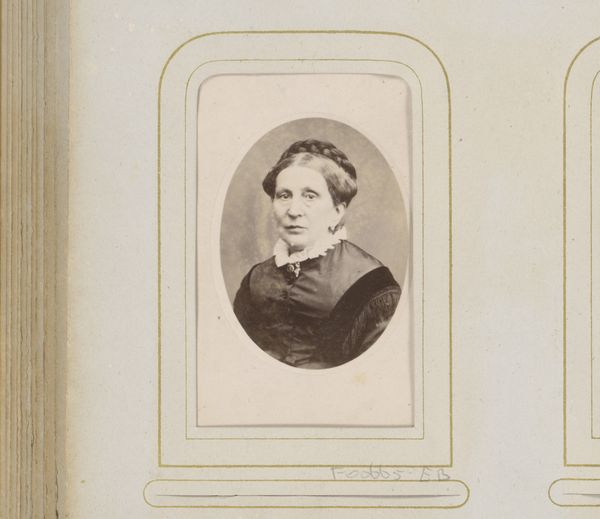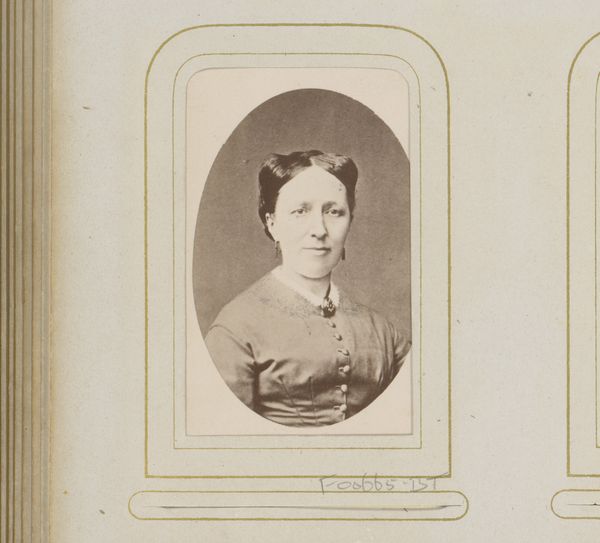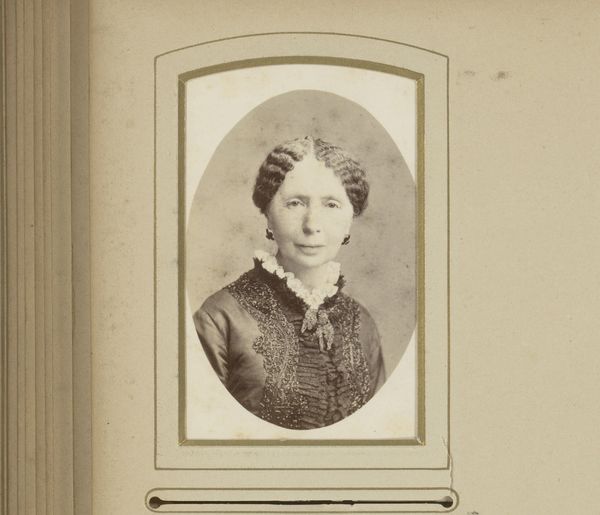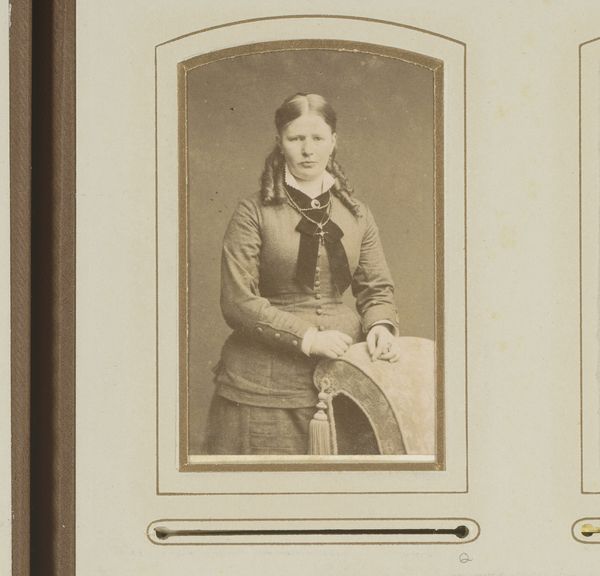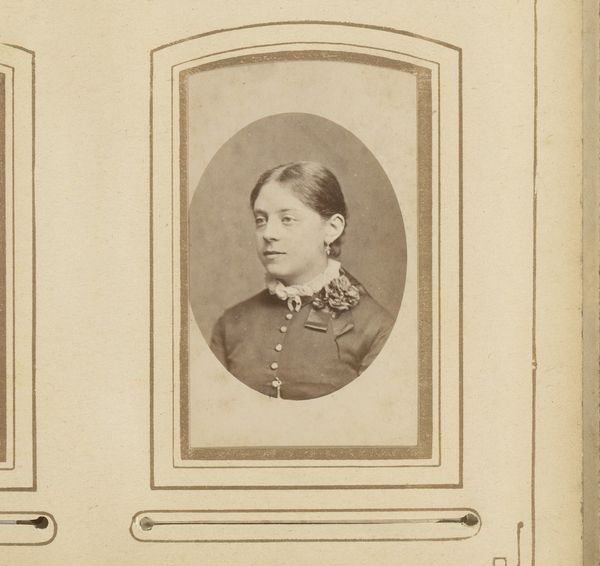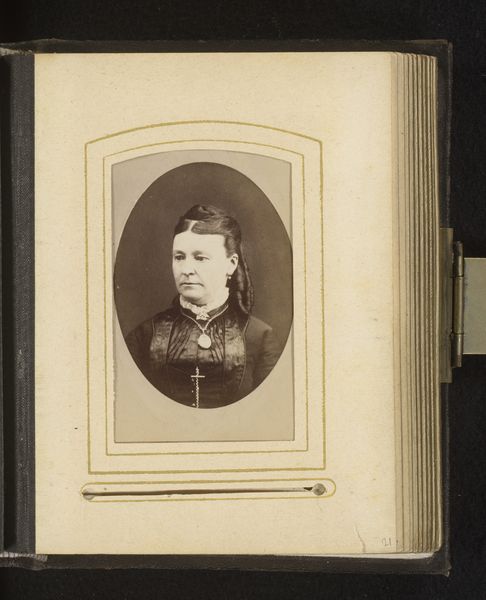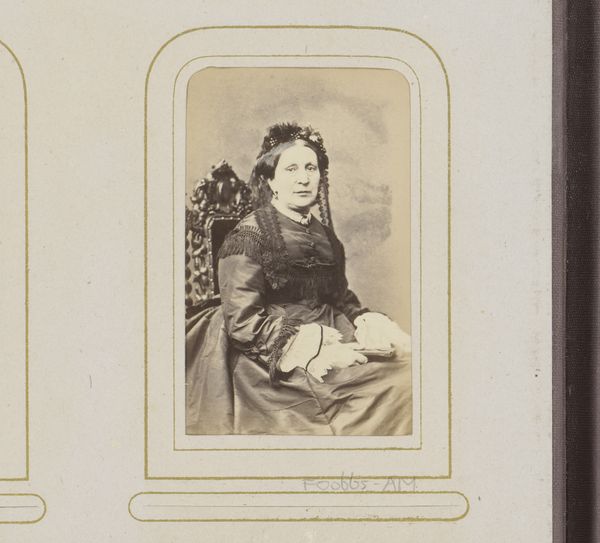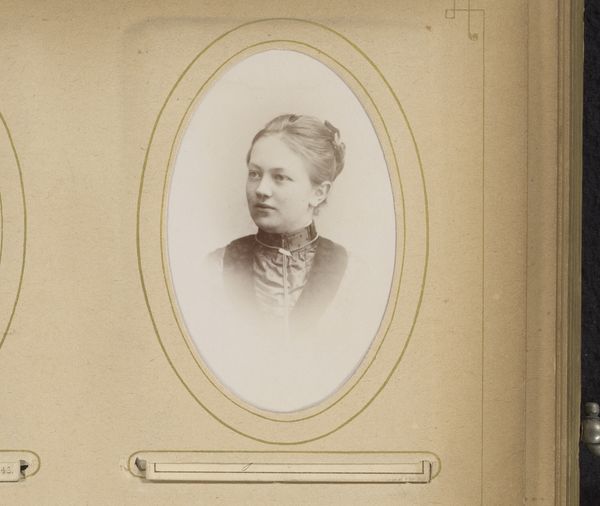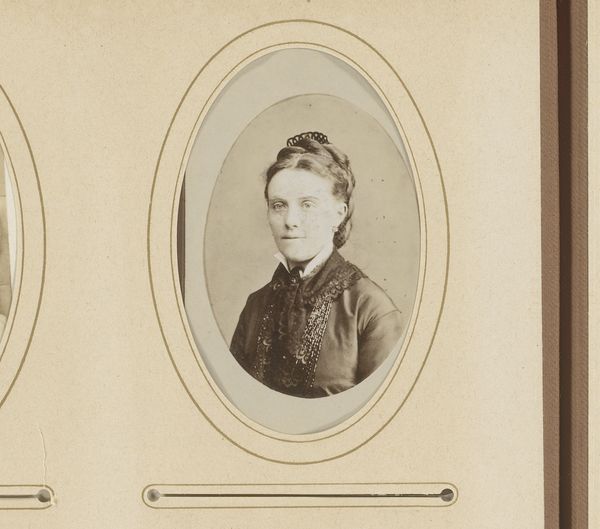
photography
#
portrait
#
photography
#
historical photography
#
genre-painting
Dimensions: height 84 mm, width 51 mm
Copyright: Rijks Museum: Open Domain
This portrait of a woman was made by Friedrich Julius von Kolkow, and it can be found in an album of calling cards, though the photographic print is made from albumen. In the mid-19th century, albumen prints were the standard for photographic reproduction. This technique involved coating paper with albumen, found in egg whites, and then sensitizing it with silver nitrate. When a negative was placed on the treated paper and exposed to light, a positive image gradually appeared. The albumen printing process, while capable of rendering exquisite detail, was labor-intensive. Preparing the paper, exposing the image, and then toning and fixing the print required skill. This speaks to the democratizing force of photography at this time, which nonetheless remained a very crafted medium. Ultimately, understanding the material processes and social context is key to appreciating the full significance of this beautiful, small portrait. It’s a reminder of the labor and artistry involved in even the most seemingly straightforward images.
Comments
No comments
Be the first to comment and join the conversation on the ultimate creative platform.

